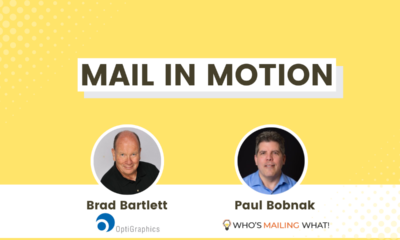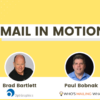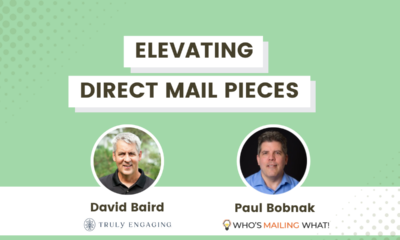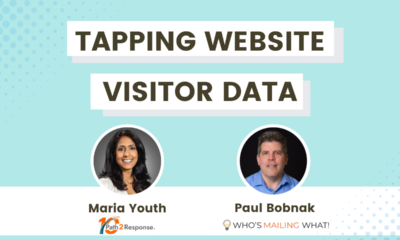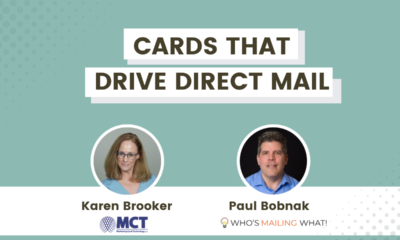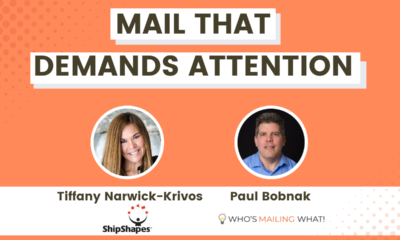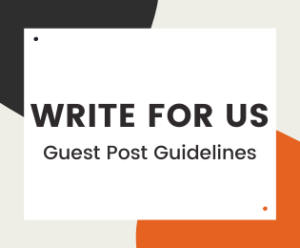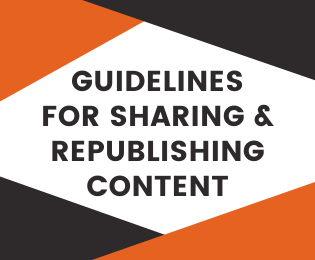MEET THE MAILERS
Meet The Mailers: Evolving CCM Solutions for Mailers & Printers
In this episode, we talked with Racami about the company’s CCM solutions for mailing industry companies.
In this episode, I talked with Matt Mahoney, Executive VP, Sales & Marketing for Racami LLC. Racami is an information technology and services company based in Norcross, GA.
Much of our discussion focused on how Racami works with mailers and printers to optimize their customer communication processes through streamlining and automation.
Mahoney described an important part of data management for customers:
“What we’re bringing to the table is visibility internally, so you can run the business as efficiently as possible, make sure everything’s happening the way it should.”
 Matt Mahoney
Matt Mahoney
Executive VP, Sales & Marketing
Racami LLC
Among the many topics we covered:
- Matt’s career journey and his day-to-day role
- The company’s workflow automation platform
- How customer demand for cost savings drives innovation
- Trends in direct mail
- His favorite types of direct mail campaigns
Here are some questions and answers from our conversation (edited for clarity and space):
- [L]et’s just jump right into it and talk about Racami’s lineup of products and services. I’ve talked on this podcast about software in terms of using data in mail campaigns like targeting, VDP, modeling, etc. [I]n the postal and print environment today, it’s essential to focus on using software and services to optimize customer communications. Can you give us a rundown of the Alchem-e platform and how it can benefit direct mailers?
So what we bring to the table is sort of two sides of the business equation. Our customers are mailers and they’re dealing with data and all this kind of stuff, but they either want to find ways to increase the revenue, or look for ways to reduce costs.
And so we do both! The early stages of our company, we were developing tools. The very first thing we took to market was a dashboard. So if a company had multiple facilities and they wanted to really keep track of everything that’s going on, all the jobs, hundreds of jobs, maybe thousands, that they’re taking care of in the course of a month or so, they needed visibility. And then we realized that, well, they need visibility, but they also want to automate stuff.
So the manual labor and the data processing and having people data key stuff and push buttons, they wanted to get rid of that and as much as possible create automation. [W]e came to market with automation tools where you can create low code connections between systems and tasks and create your own automation for mostly like file processing, but also automation and collecting production data like “ What happened with that machine on 1st shift and 2nd shift and 3rd shift?” And “Was it up? Was it down?” What kind of productivity did that machine have?…was it running fast that day? Was it running slow? Is it because [of] the paper?
[T]here’s these sort of production metrics that we also automate the collection of, [so] that people don’t have to put it in spreadsheets or on clipboards or anything like that. If you can talk to the machine and collect it, then that’s better than doing it manually. And then the third thing we did after the dashboard and the automation is we started building tools that would do things that would actually do the work.You want to do some segmentation on a list. Or you want to create an email and have it sent out automatically. Or you want to run some postal processing, or create a personalized piece. Then we started building functions for doing the data manipulation, the print management, the post-composition reengineering … like right now, a big thing with us is batching work. [C]ompanies have all these jobs [that] are getting smaller and smaller, more segmentation and that’s not so great for production efficiency, having a lot of small jobs.
Our customers want to combine and make a big job for production but still be able to build back on little things. So we’re doing both, helping companies, traditional printers, maybe get into digital, get into emails and texting, across channels. That’s kind of a hard thing to do and a lot of printers are fearful of that. It’s the unknown and maybe they don’t have IT people on staff. So we’re helping generate revenue, but also squeeze out as much cost as possible for the business.
- [T]he other big elephant in the room now on the minds of a lot of mailers is the postal system … putting aside all of the uncertainty that exists right now, rates are going to be going up after historic increases for the last couple years, so efficiency and integration, which is what you guys are about, is essential. So can you talk more about how batch processing with Alchem-e Batch improves USPS processing and also keeps costs easier to handle?
So just by making a tool that allows them to say “Hey, I want to batch these files between these customers, based on these materials” and just be able to set that up quickly, is very powerful for our customer base. And they do it for two reasons.
One is for the production efficiency that I talked about, and the other is if it’s possible for the kinds of work that they do, they might be able to squeeze out more postage discounts by increasing the density per ZIP code by combining work across multiple jobs or multiple customers. If they’re a print service provider, they might be able to take 6 or 7 customers and batch them together instead of sending it out and doing it physically, because you can send your mail to a commingler, right? Like Pitney Bowes or somebody. And they’ll commingle that mail and give you some discount.
You can do it electronically up front with our batching tool. That’s something that’s proven to be pretty valuable. And for First Class Mail, it’s super easy because the post office dictates what the requirements are. We’ve been able to standardize this so that when you’re batching, you don’t have to know a lot, as a user, about the postal setup of the software.
It’s pre-configured for you for First Class Mail … if you want to do other kinds of mail then you know you might get in there on what you want for postal processing to be like, but for First Class Mail, we’ve made it super easy.
- So good prospects for Racami’s products, I would think would be commercial printers, but who else?
Our big customer base, because we’ve just been there so long, is the transaction processors and those fall into really kind of two categories. It’s either an in-plant – so you look at like Allstate, right? They’re in the insurance business, but they have their own printing ability. Now, I think recently they’ve outsourced a lot of that, which leads into the other kind of companies that we deal with, which is a print service provider or sometimes called a service bureau or commercial printer.
So different names for them, but they all have in common that they mass produce and distribute either a printed piece or some kind of electronic communication. And it doesn’t have to be a communication.It could be a sign. It could be a golf ball. You know, something else that gets printed.
- We know that mailers need to streamline and integrate their data and their processes, and they have to save on postage and other costs, get the mail and coordinate it with other channels, as soon as possible, simultaneously, operate hand-in-glove more. So what are the barriers that are holding companies from investing in that kind of tech to replace their older, slower, maybe their legacy systems.
Yeah, good question. I mean, there’s no shortage of software and hardware available to our customers today. If you look at the martech landscape, it’s thousands and thousands of options for tools that you can use in this space.
And so some of the hurdles are really: what tools do you buy to apply to your business? Do you have the staff to do it? Because if you’re a commercial printer, you might not even have one technical sort of IT person, developer sort of person on staff. And so it changes your business to go in that direction.
You’ve got to hire the right people, get the right products and understand those things and then go find some customers that want this kind of service. You have to have sales people who know how to sell it. It’s not like selling print. Maybe you’re selling a marketing-related service and so you’re talking to a different kind of person that you’re selling to and you’re selling an integrated campaign and what they’re really buying from you is results, not print.
A lot of those hurdles we see with our customers that are trying to figure out how to navigate where the market is going with digital. And even things like payment processing that we got into because a lot of our customers send bills and we’re closing the loop so that they can collect payment on the back end… a lot of these decisions that companies have to make about where they’re going to go because the post office is fragile, prices are increasing, that’s driving people to reduce the amount of print. Because it’s so expensive to mail. The service level for some parts of the mail stream are going down, it might take longer to get there and it costs more. So companies are looking for other ways… can I use a digital alternative? And if I can, some of those barriers are just like “how do I do it?”
- As a company with such a data-driven approach, how much of that is providing more transparency and visibility into all the parts of the process? I think that today’s printers and marketers …they want to know what’s going on at any time 24/7/365 with any of their print and marketing jobs.
Yeah, 100%. We were just at a conference last week and we’ve known this for a while, but it just really validated our thoughts … one of the hot topics – and there was a session on it – is customer-facing dashboards. The print service providers, their customers are wanting to have more visibility. “Did you get my job?” “Did you print it? Did you mail it?” “If you’re doing digital for me, I want to see email bounces” and all these kinds of things. “How many made it through.”
Maybe I’ve got the call center integrated. I need to see when the mail is hitting the mailboxes so that we can staff the call center appropriately. So there’s a lot more visibility needed on where jobs stand, not only an individual job, but down to the mail piece level or what we call the record level.
And so a lot of this is what we’re bringing to the table for our customers is visibility internally, so you can run the business as efficiently as possible, make sure everything’s happening the way it should. If a printer goes down, you need to know that and be able to reroute.
[T]hings happen in the course of a day, right? And your customers as a print service provider want that kind of visibility too. And [as] it gets more and more data heavy, the more digital you go. [I]f you send one email through a production channel and you’re wanting to get statuses back, you can get up to seven statuses. It bounced, it bounced, it made it through, they clicked the link in the mail, there was a soft bounce versus a hard bounce. All these statuses and you’re getting [them] over the course of a period of time.The data that you’re recording explodes. All these signals that are coming back from the digital channel goes into the database so that you can make the next best decision. Maybe you sent an email and it bounced. So your workflow said “OK, we’re going to try again.” We sent the second one – and that bounced. We sent the third one – that bounced. Then the workflow says “revert to a mail piece”.
You’re gonna have these signals coming back. It’s gonna feed the next best step to take. And so all of that relies on data and you’re getting more and more of it. So if you’re a commercial printer and you haven’t dealt with this before, you better plan on having good database management skills.
- Speaking a lot more broadly, what kind of trends do you see for the direct mail marketplace from your perspective for the next year or so?
I think it’s sort of more of the same. You have this personalization idea, right? Where we wanna talk to somebody and marketers will segment their data and have these cohorts and they send messaging to them. [T]here’s going to be more use of AI to do finer and finer segmentation, so we can really get more closely to the segment of one and do that well with the proper timing.
So let’s say somebody abandons a shopping cart, right? I love to shop online, but then I never buy. I tend to get emails. “Hey, you left something in your shopping cart. Did you forget something”, right?
[B]ut you can also do that with physical mail. You can say if they abandoned – and with AI-driven sort of hyper-personalization and the programmatic automation that you can put around it – you could quickly create a mail piece within a day of them abandoning the shopping cart and get it to them. And so it’s the speed to market on this one-to-one sort of segment-of-one personalization. AI is gonna help with that … advance that particular initiative.And then just, omnichannel integrations, people having a hard time still, it’s a very complex thing to do … like you said, hand-in-glove kind of thing. [T]here’s gonna be a lot more companies advancing in that direction.
Some software providers providing new tools. Of course, there’s things like HubSpot and Marketo and these marketing tools. But those are digital natives. They don’t know much about print. So you’ve got to marry the print tools with these digital native tools for marketing and we’re providing software glue to do that and that’s something I think is going to be needed in the future is just more integration between sort of the traditional print channels and the digital divide that’s there.
- Yeah, maybe you’re going to have people who are well-versed in how to utilize all of them equally well at the same time.
For sure, that is a problem. We were at the conference and they’re like, “it’s hard to find people”, especially young people… this industry tends to have a lot of older people in it, the print industry.
So bringing young people in who are interested in it and can help us grow our businesses and keep the industry going, and know how to do these other digital things. [T]hey grew up in digital, so it’s important to have that kind of person come into the business. And I think that is a challenge for our industry is attracting young talent.
Here is our conversation (with all questions and answers). We’ve added timecodes for your convenience.
Thank you very much, Matt, for sharing your perspective and your expertise! To learn more about Racami, visit their website at Racami.com.
Your comments and ideas are very important to us in making your Who’s Mailing What! experience even better for you. Through these engaging talks, we hope you’ll take away practical tips, insights, and personal stories to inspire and build your own success.
If you have any feedback — or are interested in sharing your story and viewpoint with our wide and diverse audience on “Meet the Mailers” — please reach out to me. I’d love to hear from you!







